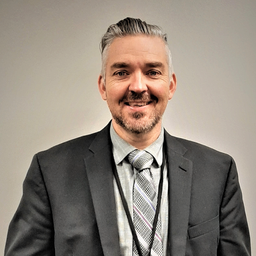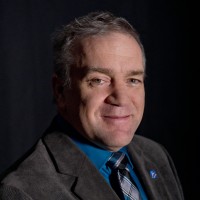
During the WinterGeo summit this past March, a collection of some of the most prominent names in Canadian Geospatial sciences gathered to address the state of Canada’s geospatial developments, and more importantly, their impact and how the genesis of the Canadian Satellite EO Strategy is developing.

The three chairs who navigated the panel were David Harper, Director General of Monitoring and Data Sciences with Environment and Climate Change Canada, Eric Laliberté, the Director General of Space Utilization with the Canadian Space Agency and Éric Loubier, Director General of the Canada Centre for Mapping and Earth Observation with Natural Resources Canada.

The panel kicked off in earnest as panel moderator and conference host, Jon Murphy, launched discussions surrounding the implementation of satellite earth observation strategies, and more importantly, how these initiatives are a major driving force behind aspects of the Canadian economy — as they provide billions towards the overall GDP within the country. The panel also covered additional aspects of earth observation within Canada, with a focus on how satellite sciences contribute to crucial developments when it comes to decision-making surrounding the environment, natural resources, agriculture, and the safety and security of the country.
While the general overview of how satellite technology set the tempo for the panel, the main focus was the current state of the 2022 Satellite EO Strategy.
“The strategy didn’t happen overnight,” Harper states in the panel, as he discusses the timeline in which the process started off as a relatively small task force back in 2018, to its current state, with a full budget and strategy now in place.
Harper also engaged with Murphy surrounding potential collaboration to raise awareness of EO strategies, as well as youth engagement.

As feedback had been gathered from stakeholders over the last few years, the panel was able to take a look at aspects running parallel to its progress, such as interest in open data models, regulatory reform, and the ability to provide products based on data from the technology itself, with an additional focus on alternative business models and long-term investment opportunities.
The goals of the strategy, while extensive in nature, were streamlined throughout the panel to give a general sense of the long-term goals of satellite use within both the Canadian government and the scientific community. The long-term goals of its implementation aim to focus on ensuring the benefits of satellite EO are maximized. Some examples presented include harnessing the technology to address climate change, utilizing it to strengthen the delivery of critical services throughout the country, and bolstering the development of satellite EO implementation for future generations.
While the execution of this strategy is well underway, those on the panel are adamant that it still requires the same kind of time, dedication, and patience that any long-term scientific solution demands.

“We need this engagement now. This is an evergreen process, not a one-time thing. This strategy is over many years, and this needs to happen throughout those years, repeatedly and with specific ideas on what investments will yield the most benefits,” said Loubier during the panel.
This engagement has resulted in a perpetual rhythm of planning and preparation, as both incentives, and investors, are developing alongside the strategy’s evolution.
“We’re constantly in planning and recommendation mode with the government for investments, and we want to do continuous engagement,” added Laliberté.
One of the key talking points of the panel was the discussion of various solutions for this specific type of engagement,and more importantly, how to maintain it.
“We don’t want to restart something every five years and start something new. We have to keep this rolling catalogue of needs for Canada. In order to do that, we do have a vision that’s end-to-end,” Laliberté states.
Laliberté also mentioned that if any potential partners are willing to become potential stakeholders regarding Canadian EO strategy, they contact him directly through his public email.
While the panel covered a large amount of territory in regards to EO requirements, the panel members remain hopeful about its future, the work that has been done, and where to go next.




Be the first to comment